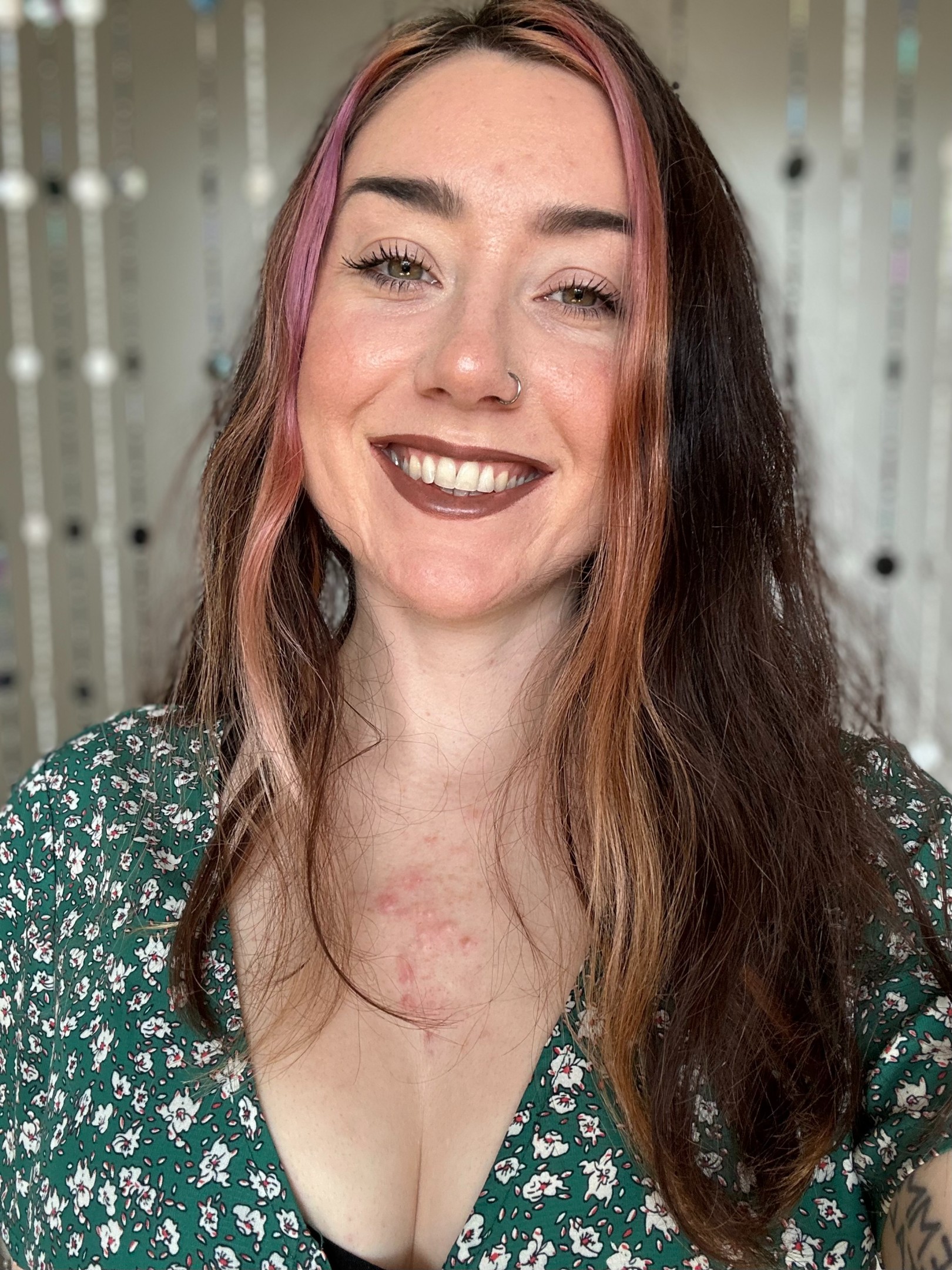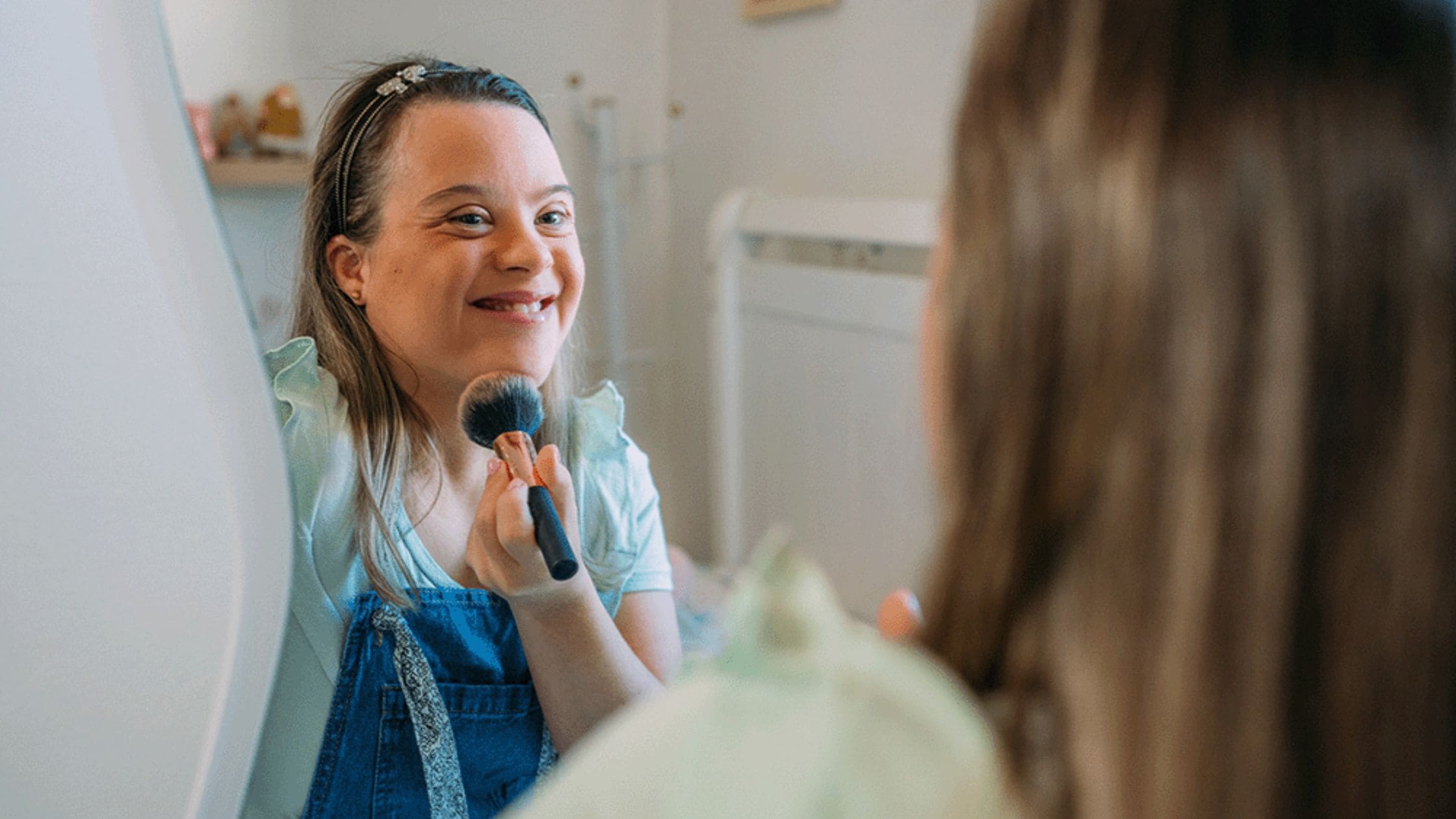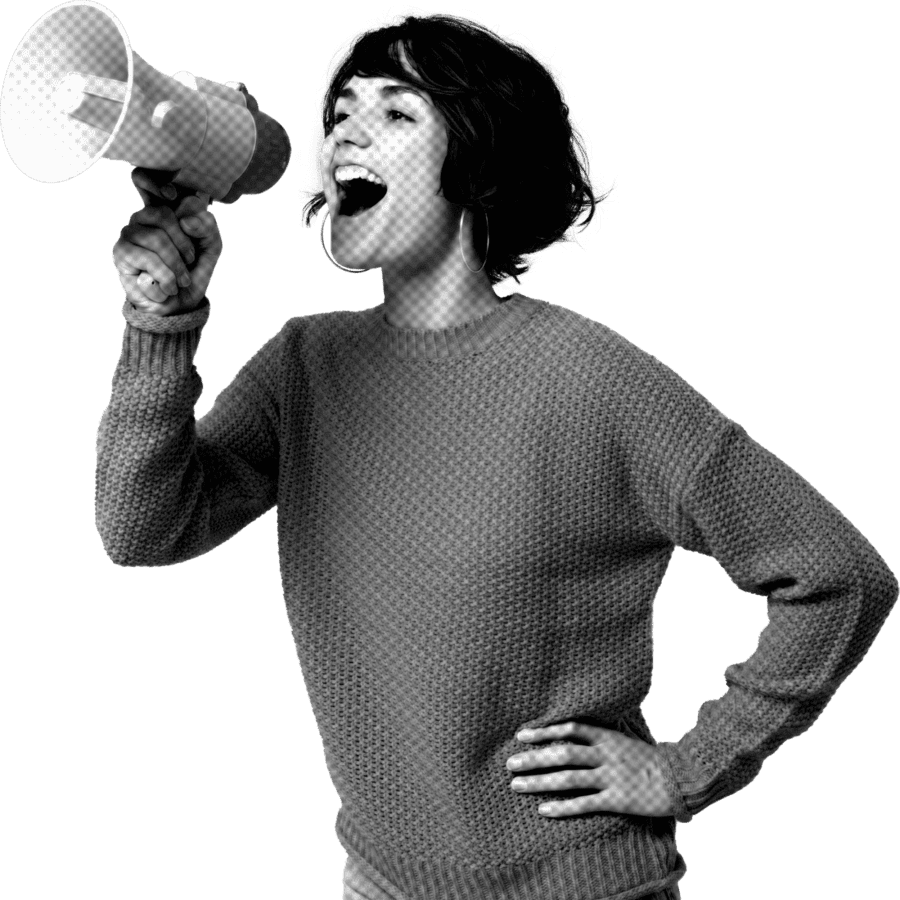My name is Emily, a disabled writer and storyteller. I’ve worked in teams where I have been the only disabled person; as an assistant, a manager and in governance roles. I have worked for companies with equality, inclusion and diversity at the epicentre of their brand, and ones who claim to be inclusive yet are still getting it wrong. I’ve had experience of disabled-led and disabled-serving brands, paying attention to who is really listening to the needs of those with disabilities and whose biases are still occupying the front seat.
As a person born with a physical disability, it’s not something I can ever hide from–despite having tried–but I have noticed the myriad of ways in which other people attempt to divert and avoid my disability, and I know I am not the only one. Scope charity found that “two thirds of Brits say they feel awkward around disabled people”, and that is exactly why we need to begin to portray disability in a more deliberate way; from every possible angle.
The inclusion of people with disabilities is vital, not because it will make other people feel less uncomfortable around us, but because if awkwardness surrounds disability, it means we are not being listened to or properly understood. Let’s start building that inclusion from the workplace.
What Is An Inclusive Work Team?
Inclusion is a term used frequently in conversations surrounding disability equality. This is because historically, disability and the disabled experience has been largely misunderstood and therefore excluded: it is vital that we now seek to change this.
Inclusion means to involve everyone. This is especially important for those who may have been previously excluded, not only to allow equal opportunities, but to encourage different perspectives, voices and ideas to emerge, integrate and be heard where they may have once been silenced or ignored.
A fully inclusive work team will be able to welcome different groups of people with a vast array of identities, meaning that every person is welcomed and encouraged to be involved.
How To Create a Fully Inclusive Workplace
In order for a workplace to be fully inclusive, you have to create an environment that is accepting of different types of people and their identities. It’s really important to consider intersectionality when thinking of identities too: the overlapping and multifaceted experiences of disabled people from diverse backgrounds and different communities.
The best way to create an inclusive space is to ask members of society who have been historically excluded, such as disabled people, what it is they need to feel like a valued and accepted member of a workforce. I’ve seen a lot of instances where able-bodied-run brands will assume the best practices for making a work environment accessible for disabled individuals, instead of actually seeking out those individuals and asking them directly what it is they truly require. As a person with a disability, I can unfortunately say that this happens a lot. Able-bodied people will assume that they are doing the “right thing”, which is usually well-intentioned, but actually ends up causing harm because they haven’t sought-out or tried to understand the disabled experience.
Why Representation Is Not Enough
Disability representation has improved within pop culture and media representation, however there is still a long way to go until businesses are able to accurately represent their consumers. Even though it’s incredibly important for us to see disabled people represented in ad campaigns and other forms of digital marketing, it’s also fundamental in the creative process of these things too – especially in order to avoid things such as tokenism and diversity washing.
As a person with a disability, you will spend your life navigating a world that was not designed for you and therefore are able to pick up unique and efficient ways of operating. If these skills of adapting and evolving were encouraged to be showcased in a work environment it would allow for a wider, more rounded perspective, thus enhancing creativity, innovation and the success of any brand.
This benefits a company because they not only will be supporting and uplifting the disabled community, they will also gain insights and unique ways of creating, managing and designing a team that only disabled people can offer.
The Power of Disabled-led And Co-created Companies
In 1954 Dr Woog invented the electric toothbrush, designed to aid his patients with limited dexterity to brush their teeth in a more accessible way. After the product was tested and used by his patients it was then discovered that the electric toothbrush cleaned teeth and gums to a higher standard than a manual toothbrush, resulting in the commercialisation and popularity of the product.
The consideration of disability within the design of the electric toothbrush caused Dr Woog’s invention to not only jump over an important accessibility hurdle, but better the outcome of mouth hygiene and teeth cleanliness for everyone. Disabled-led and co-created design is more impactful as a tool for creativity, innovation and a more accessible world for us all.
As well as the powerful outcomes we see in design and invention, “organisations that have a positive and inclusive approach to managing disability can reap benefits in terms of increased loyalty and commitment from staff”, according to the UK Government. The article goes on to state that “The best businesses like to reflect the make-up of their consumer base in their workforce – disabled customers and their families have a spending power worth £274 billion.” This is called The Purple Pound.
Barriers to Inclusivity & How to Overcome Them
The common problems and assumptions that companies might face when it comes to creating an inclusive workplace include the following:
- Prejudice: a preconceived notion that those with disabilities are deemed lesser than those without, with the potential to result in discriminatory behaviour
- Profit over people: the belief that if money is invested into disability, accessibility, equality and fairness, that money will be lost with no benefit or comeuppance to the company
- Ignorance: being unaware of how to create an inclusive work team and unwilling to ask, grow or change
- Archaic thinking: stuck in a certain mindset with ideas that are outdated, unable to move beyond them
- Lack of positive examples: because of the lack in diversity, equality and inclusion in the workplace, there is a lack of guidance when it comes to creating inclusivity
Overcoming barriers
- Prejudice: insisting that all staff are Disability Confident, and have undergone diversity and inclusion training
- Profit over people: ensuring your company considers and understands The Purple Pound, has compassion at the forefront of their marketing, and understands that a more inclusive work environment is fuel for a greater and more productive workforce
- Ignorance: creating a work culture that values open-mindedness, asking questions and encouraging employees to continue learning and growing
- Archaic thinking: remaining up to date with current and new ideas, encouraging a safe environment for people to express and challenge old ways of thinking
- Lack of positive examples: more defined and rigorous research into companies who are displaying representation, inclusion and diversity in a well-rounded positive light
The Outcome of Inclusivity in The Workplace
In order to really understand the impact of having a diverse and inclusive team, I spoke to the following people who all feel as though their work environments adhere to practising inclusivity and, therefore, greater benefit to their productivity, work ethic and safety:
“Since working with a brand that is led by and for the disabled community I’ve had the opportunity to connect with other people within the community whilst watching how my company’s tools have benefitted them. Having a disability myself means I relate to and understand the needs of the customer because I am also the customer! Being able to openly speak about my limb difference without the fear of being judged has been so liberating. In previous jobs and work environments I’ve felt quite isolated and unable to be open about my disability or requirements because of the lack of diversity within the workplace, but this has been the opposite!”
Shannon Crossand, Content Coordinator
“I’m mobility, sight and hearing impaired and I tell clients I need communication in writing because the transcription of voice notes is sketchy. One of my clients primarily communicates via voice notes, and I was nervous about bringing it up, but when I told her I needed instructions to be written her answer was “oh I’m sorry. Of course I will write”. Disabled people can feel like asking for adjustments will make people think they are being difficult or demanding but the fact that the busy CEO of this big business unquestionably adjusted her communication habit for me is special.”
Veronica Pullen, Copywriter and Online Marketing Strategist
“Living with a disability in the form of a speech impediment can really heighten my internal voice of self doubt. Having worked previously in a less diverse sales environment, the culture of competition played into the narrative of “I can’t set boundaries otherwise I’ll be looked upon badly”. Meetings were often a display of people talking over each other, which isn’t ideal for anyone, but when you have a speech impediment this environment feels almost impossible. Luckily, in my current role I feel safe to set boundaries and I trust that any boundaries I uphold won’t be viewed as a “bad attitude” or act as a mark against me in my future progression within the organisation. My team is understanding and they allow me the time I need to express myself which makes me feel more comfortable to contribute.”
Laura Harris, Fundraising Coordinator
Conclusion: Uplifting Disabled Voices
The issues that arise from exclusion mostly come down to companies not listening to, or valuing the needs of disabled voices. This should not only feel like an easy barrier to overcome, but mandatory.
Inclusion consultant and CEO Aggie Mutuma, at Mahogany Inclusion Partners, says that
“We’ve observed that successful inclusion of disability within organisations goes beyond policy – it’s about weaving inclusivity into the fabric of the organisation’s culture. This starts with a genuine commitment from leadership to recognise and celebrate the unique perspectives and abilities of employees with disabilities, and considering that 23% of working age adults are disabled, there is a huge pool of potential to tap into. Embracing disability in inclusion efforts not only boosts individual employee well-being and career satisfaction but also drives broader organisational growth and resilience. It is this understanding and strategic integration of disability inclusion that enables companies to thrive in an increasingly diverse and competitive global marketplace.”
In order to become more aligned with inclusion, diversity and authentic representation, I ask that you consider and seek to understand the disabled voices that surround you: only then can we begin to reach and successfully harness a fully inclusive work environment, one that has disability inclusion at the front, back and centre of its core values.
If you want to learn more about how your workplace can become more inclusive, the team at Purple Goat are experts in the topic, so make sure to contact them today!




